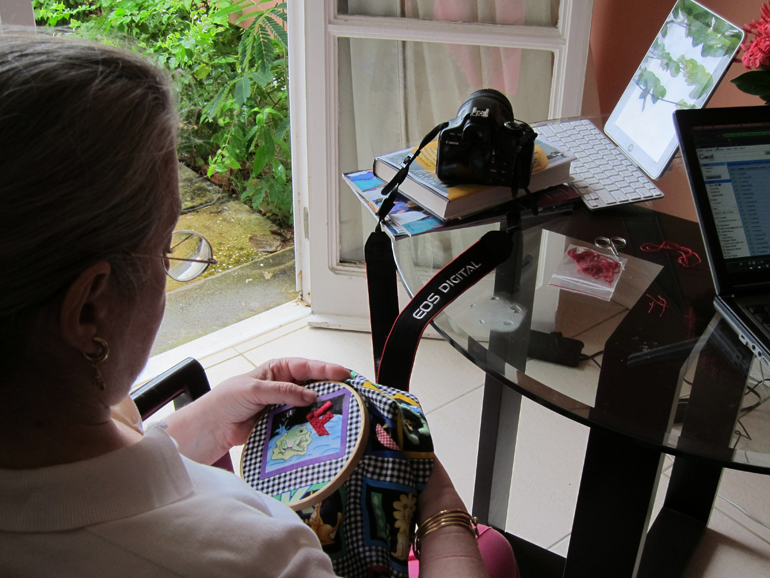Vacation Note:
Settled In
We had a spot rain yesterday. Actually, it came down in torrents for about ten minutes. Later in the afternoon, gusts of wind would whirl through, making me feel somewhat chilled, even though it is nowhere near cold here.
At lunch, a fortysomething fellow stopped at our table and asked if we were the So-and-so’s. When we told him that we weren’t, and who we were, he explained his asking. No sooner had he arrived with his family the day before, than the front desk called to say that the car was ready to take them all into town. It seems that another party of the same name — So-and-so — was staying at the hotel. This sort of mixup had occurred on earlier visits, which, it just so happened, coincided with ours — Mr So-and-so remembered that I wore a neck brace a few years ago! — so he thought that maybe we were the other So-and-so’s. A recent family trip to the Waldorf-Astoria and all the sights of Gotham was described. I handed over a card and asked to be allowed to take the So-and-so’s on a tour of the Metropolitan Museum of Art next them they’re in town. “Is that what you do?” he asked.
What was going through both of our minds during this conversation was another amusing coincidence: “So-and-so” happens to be the name of a doubly-fictional creation, a character in a notoriously celebrated espionage thriller who does not, in fact, exist. Having been mistaken for “So-and-So” was the very opposite of rotten luck.
When Kathleen woke up from her afternoon nap, and we decided that neither of us was up for a walk on the beach — gawd, we’re tired — I read three stories from Emerald City aloud. Immersing myself in Jennifer Egan’s writing puts me in a very strange place. Egan reminds me of the whip-smart girls from private Catholic schools who always seemed to know ten times more about how the world works than anyone else, all the while conducting unexceptionably virginal lives. In Egan’s books, people can be very, very bad without ever breaking a law, or even driving over the speed limit — and that’s the point. So many of her characters seem to be looking for a line of sin that won’t get them in trouble with the police. It’s not that they do bad things that happen to be sins, but that they look for sins, sins that won’t too badly inconvenience their living arrangements. In short, Egan makes most students of evil look incredibly naive.
I’ve been reading Foreign Bodies on the iPad. In the Times digest that the hotel distributes every morning, I saw that it’s the subject of today’s book review. I think I’ll wait to finish the book before seeing what Thomas Mallon has to say.

